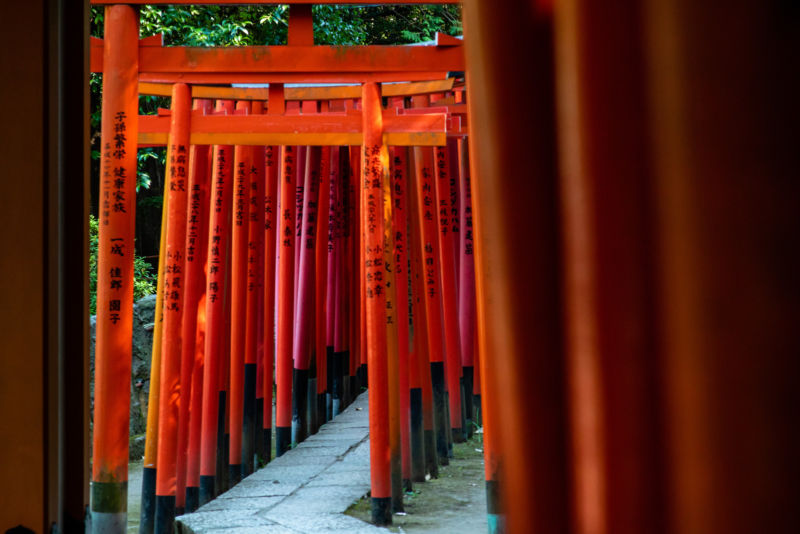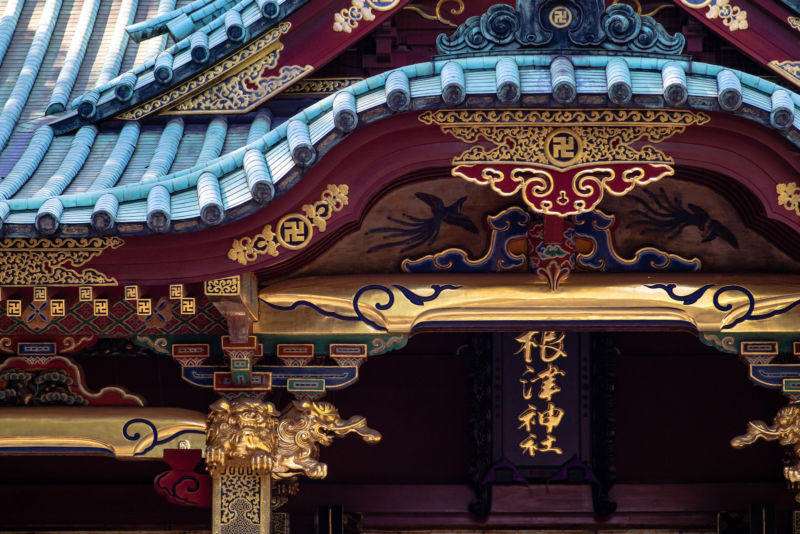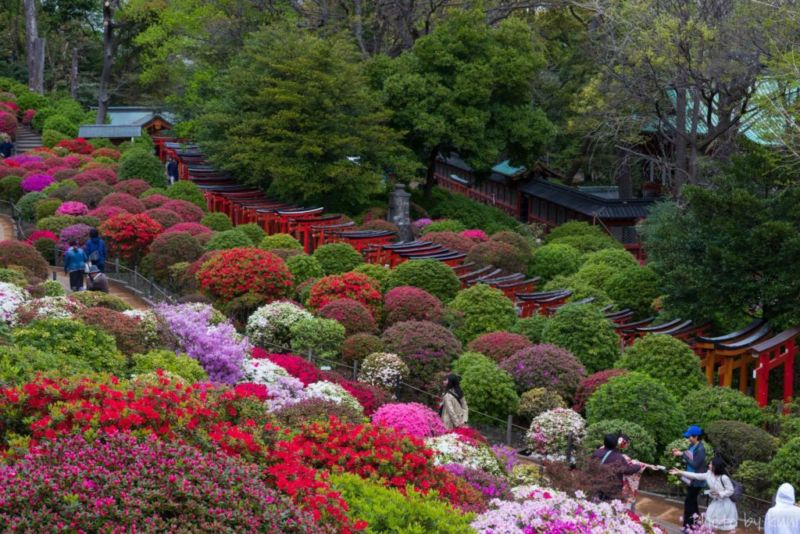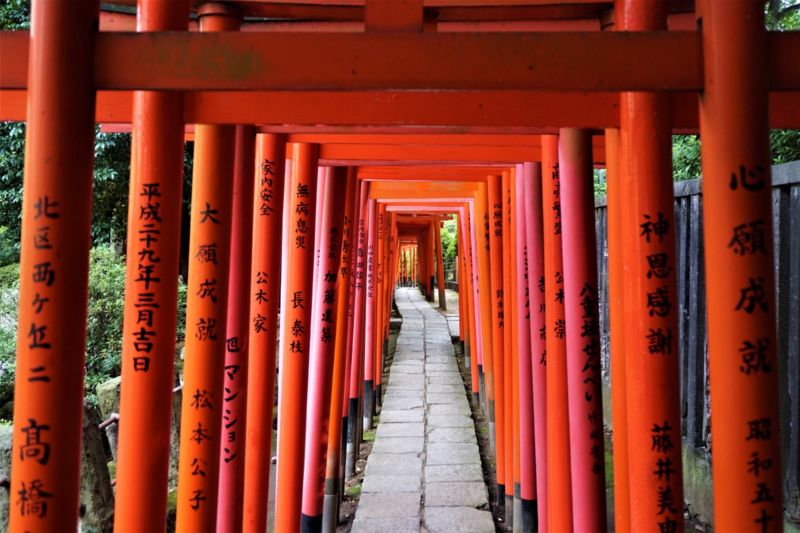The following is taken from GaijinPot.

This shrine may look like it’s plucked straight from Kyoto, but its torii tunnel and blooming azalea sit nestled right in Tokyo.
Tokyo harmoniously blends the traditional and modern culture of Japan, but sometimes its technology and skyscrapers overshadow its quiet side. Those looking for a bit of zen amongst Tokyo’s bright lights can head over to Nezu Shrine in the Bunkyo Ward.

The shrine is one of Tokyo’s oldest places of worship and a prime example of Edo-period architecture.
Spend an afternoon walking through the bright red torii gates. Nezu Shrine features a hillside garden, a pond with vibrant koi fish, and a tunnel of vermilion torii gates just like Kyoto’s renowned Fushimi Inari Shrine.
It may not be as grandiose as Fushimi Inari, but Nezu Shrine is beautiful in its own right. Its garden is a great photo spot, especially during the Bunkyo Azalea Festival held from April to May.

During the festival, colorful flowers turn the shrine’s lush green garden into a sea of red, purple, and white. Enjoy traditional dance performances and try all the delicious festival food if you visit during that time.
Beyond the torii gates, the shrine itself was inspired by Nikko’s Toshogu Shrine in Tochigi Prefecture. Both shrines feature elaborate gilded detail and colorful motifs. It’s kind of like getting a taste of ancient Japan right in the heart of modern-day Tokyo.
That aforementioned harmonious Tokyo blend is one of the best things about Nezu Shrine. In Nikko, you are pretty much limited to temples, shrines, and nature. With a visit to Nezu Shrine, you can easily eat lunch at a maid cafe in nearby Akihabara, then hit up Shinjuku for drinks afterward.
Things To Know: Opening Hours 9 a.m. to 5 p.m.
Admission is free, however, it costs ¥200 to enter the hillside garden during the Azalea Festival which runs from early-April to the end of May.
*******************
For a different look at the shrine, see here. Wikipedia gives details of the architecture here.


Leave a Reply